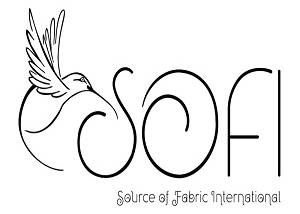Garment finishing techniques are critical in transforming raw textiles into polished, market-ready products. Different types of garment finishing techniques not only enhance the appearance and texture of fabrics but also improve their functionality and durability. In this article, we will delve into seven essential garment finishing techniques that are widely used in the textile industry to achieve impeccable results.
1. Washing and Laundering
Washing and laundering are fundamental garment-finishing techniques used to remove impurities, excess dye, and manufacturing residues from fabrics. This process involves subjecting the garments to water, detergent, and mechanical action. Techniques such as stone washing, enzyme washing, and silicone washing are commonly employed to achieve various effects, including a softer feel, a faded look, or enhanced color retention. Proper washing and laundering ensure that the garments are clean, comfortable, and ready for the next stages of finishing.
2. Heat Setting
Heat setting is a crucial process for synthetic and blended fabrics. This technique involves exposing the fabric to high temperatures to stabilize the fibers and set their shape. Heat setting helps in reducing shrinkage, improving dimensional stability, and enhancing wrinkle resistance. It is particularly important for fabrics like polyester and nylon, ensuring that the garments maintain their intended shape and structure after repeated use and washing.
3. Pressing and Ironing
Pressing and ironing are essential finishing techniques used to remove wrinkles and creases from garments. This process involves applying heat and pressure to the fabric, smoothing out its surface and giving it a crisp, polished appearance. Specialized equipment like steam presses and ironing machines are used to achieve precise results. Pressing and ironing not only improve the aesthetic appeal of garments but also enhance their fit and drape, making them more attractive to consumers.
4. Chemical Finishing
Chemical finishing involves the application of various chemical treatments to fabrics to impart specific properties. Common chemical finishes include water repellency, flame retardancy, anti-static treatments, and antimicrobial finishes. These treatments enhance the functionality and performance of garments, making them suitable for specific applications and environments. For example, water-repellent finishes are ideal for outdoor clothing, while antimicrobial finishes are beneficial for medical and sportswear.
5. Embroidery and Embellishments
Embroidery and embellishments are decorative finishing techniques that add aesthetic value to garments. Embroidery involves stitching patterns or designs onto the fabric using threads, while embellishments can include sequins, beads, and other decorative elements. These techniques enhance the visual appeal of garments, making them more attractive and unique. Advanced embroidery machines and handcrafting skills are often used to achieve intricate designs and high-quality finishes. Read More About The Different Methods of Dyeing Fabrics
6. Coating and Laminating
Coating and laminating are advanced finishing techniques used to enhance the functionality of fabrics. Coating involves applying a layer of polymer or resin to the fabric surface, providing properties such as water resistance, UV protection, and abrasion resistance. Laminating involves bonding two or more layers of fabric together, often with a waterproof or breathable membrane in between. These techniques are commonly used in the production of technical textiles, outdoor gear, and protective clothing.
7. Garment Dyeing
Garment dyeing is a finishing technique where the entire garment is dyed after it has been constructed. This method allows for unique color effects and a more uniform dye penetration. Garment dyeing is particularly popular for casual wear, such as t-shirts and jeans, as it provides a softer, more worn-in look. This technique also allows for smaller production runs and greater flexibility in color choices, making it a versatile option for fashion brands.
Conclusion
Different garment finishing techniques play a vital role in enhancing textiles’ quality, appearance, and performance. Each technique contributes to the final product’s overall appeal and functionality, from basic processes like washing and pressing to advanced treatments like chemical finishing and laminating. By mastering these techniques, textile professionals and manufacturers like SOFI can ensure their garments meet the highest quality and customer satisfaction standards.


